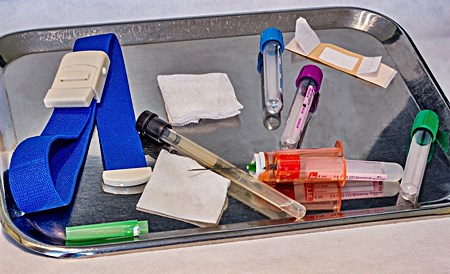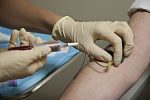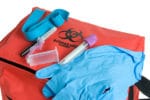Many jobs in the healthcare field offer fresh daily challenges. You’ll run into new experiences, work with different people, and have to handle different situations. However, there are also some consistencies each day when working as a phlebotomist. So, what is a typical day?
The most important thing to remember is that your days will undoubtedly be dependent on your patients. This includes how many patients you see, their ages, what they need blood drawn for, etc. You are often the first person they see before moving onto other testing or seeing a doctor.
Other factors to consider include where you work. A day in the life of a phlebotomist at a busy city hospital might be different from someone who volunteers at Red Cross blood drives. This article will cover the basics of what you can expect in a broad and general sense. But, keep in mind that different factors may change things slightly.
If you’re considering phlebotomy as a career, but aren’t sure what to expect on a day-to-day basis, let this article be your guide.
[su_list icon=”icon: check-circle”]
What Can I Expect Each Day as a Phlebotomist?
Phlebotomy is considered an entry-level job in the healthcare field. It takes minimal training, and you get hands-on experience with patients each day. But, is it the right healthcare career for you? Let’s go through a typical day in the life of a phlebotomist, including hours you may have to work, and possible unexpected situations.
Starting the Day Early
Phlebotomists typically start their day very early. If you work in a busy hospital, your shifts may change regularly. One week you might work throughout the night, and the next, you might work a more ‘typical’ 9-5 shift. Many lab technicians prefer to test blood from patients in the morning, while the patient is still in a homeostasis state; before they have eaten breakfast, done any rigorous activity, etc.
A phlebotomist will receive orders from different departments, depending on the needs of the day, so you can expect to be on your feet most of the day, moving around wherever you’re needed from the start of your shift to the end.
In some cases, you can essentially ‘choose’ your schedule. For example, working in a small clinic or blood donation center will have much more regular hours than a hospital. You may even be able to work part-time. Because there is such a growing need for phlebotomists, some certified phlebotomy students have begun freelance work, and do blood draws for different venues on an ‘as-needed’ basis.
Attention to Detail
Once you begin receiving orders throughout the day, you’ll need to make sure you know who the order is from, what the patient needs, and where the sample will be going. It’s incredibly important to be detail-oriented as a phlebotomist. You will have to identify your patient and quickly go over their medical record before you’re able to draw their blood.
Before even coming in direct contact with each patient, It’s not uncommon for a phlebotomist to check with the nurses’ station, to ensure all patient records are up to date, and they still require the same tests. In phlebotomy, you must be completely prepared for each patient to ensure they’re getting the appropriate blood draw. In many cases, the blood you draw could help to save their life from illnesses, diseases, etc.
Drawing Blood from Patients
Obviously, drawing blood is what most people associate with phlebotomy, and it’s one of the biggest aspects of the job each day. But, what does drawing blood cover? There are several steps a phlebotomist must take to perform a successful venipuncture, or blood draw, including:
- Preparing the needed supplies ahead of time
- Ensuring their room/station is completely clean/sanitary
- Applying a tourniquet to the patient to help find a vein
- Cleaning the patient’s skin before inserting the needle
- Collecting blood successfully for testing
A successful venipuncture will be different for many different patients. Some patients will have ‘easy’ veins, while it may be difficult to find a usable vein on another person. You’ll have to draw from seniors, children, and everyone in between. So, each venipuncture should be looked at from a case-by-case basis. Then, you can make the necessary adjustments as needed. In some extremely difficult cases, a phlebotomist may require the help of a nurse to get a blood draw successfully. However, they typically work independently when doing venipuncture.
Working in the Lab
Once a successful blood draw is complete, a phlebotomist will transport the collected blood to a laboratory. In a hospital setting, this can be done on-site. In smaller settings, it may need to be sent out to a lab for testing. It’s important for a phlebotomist to know lab safety procedures. It is equally important for a phlebotomist to be extremely organized and efficient so that the lab can test the vials of collected blood appropriately.
While a phlebotomist doesn’t do any of the testing themselves, they play an integral part in getting the samples safely to the lab. In a busy location, a phlebotomist could find themselves back and forth between patients and lab technicians all day.
Helping with Blood Transfusions
Phlebotomists are sometimes called to assist with blood transfusions for patients. This requires cross-matching a patient’s blood type. It’s a phlebotomist’s job to make sure they have a cart prepared for the transfusion with the correct samples and instruments needed. This is more common in hospitals than in clinics or other facilities that require phlebotomists. However, if you want to be as hands-on as possible in your career, assisting with blood transfusions is a great way to do so.
What Job Conditions to Expect Each Day
The job conditions you experience each day as a phlebotomist will greatly depend on where you work. Again, a busy hospital environment will be much different than a clinic or blood bank. If you do work in a hospital setting, you’ll be on your feet most of the day, with little time to sit or take a break. You won’t only be standing, but transporting blood samples, etc., to the lab each day. It can be a physically demanding job.
Additionally, you can expect to work with patients who have different personalities. Phlebotomists need to be even-tempered and work well with different types of people. It helps if you can carry on conversations, and have an overall kind demeanor when working with different patients. Most people don’t like to get their blood drawn, so part of your job is to make sure they are comfortable and calm as you’re performing venipuncture.
Finally, you should have a strong sense of organizational skills. Each patient you see will require great attention to detail. Not only do you need to be personable with them, but you need to make sure you’re drawing blood for the correct tests and labeling their samples correctly. Those vials need to be perfectly organized for the lab. Keep in mind that if you’re working in a fast-paced environment, attention to detail is even more important, because it can be easy to get distracted.

Will Training Prepare Me to Be a Phlebotomist?
In most cases, phlebotomy training takes less than a year, including certification. Most training facilities cover two areas of education: Classroom and hands-on. In the classroom setting, you’ll learn the science behind phlebotomy, including the anatomy and physiology of the human body. You will also cover lab safety procedures.
The hands-on portion will help to prepare you for a career as a phlebotomist. This allows you to practice venipuncture. You need to complete a certain amount of successful venipunctures before completing your training. It’s a great way to gain experience drawing blood while learning how to work with different people.
Phlebotomy is also an entry-level career with many opportunities to advance. Some people use it as a stepping stone into the healthcare field and continue onto different medical jobs. So, it’s good to know what to expect on a daily basis while you’re training for something else.
Where Can I Work?
As stated earlier in the article, phlebotomists can work in a variety of different venues. It is one of the most booming careers in the healthcare industry, thanks to advancements in technology and an aging population. Because of this underlying need for good phlebotomists, there are more opportunities in different environments.
If you would like a position that’s more low key and not as intense, choosing an organization like a local blood bank or the American Red Cross may be a perfect solution. Sometimes, small clinics or private practices will even hire phlebotomists on a part-time basis.
But, if you would like a fast-paced environment that will allow you to see many patients in one day, consider working in a hospital. They are always in need of quality phlebotomists, and it should be fairly easy to find employment after you’ve completed the training.
A day in the life of a phlebotomist is exciting and ever-changing, based on the people you’ll meet. Every day, you have to realize how important your job is and give it your full attention. If you think that you might be qualified and ready to take on these daily tasks, consider getting phlebotomy training.
[/su_list]






